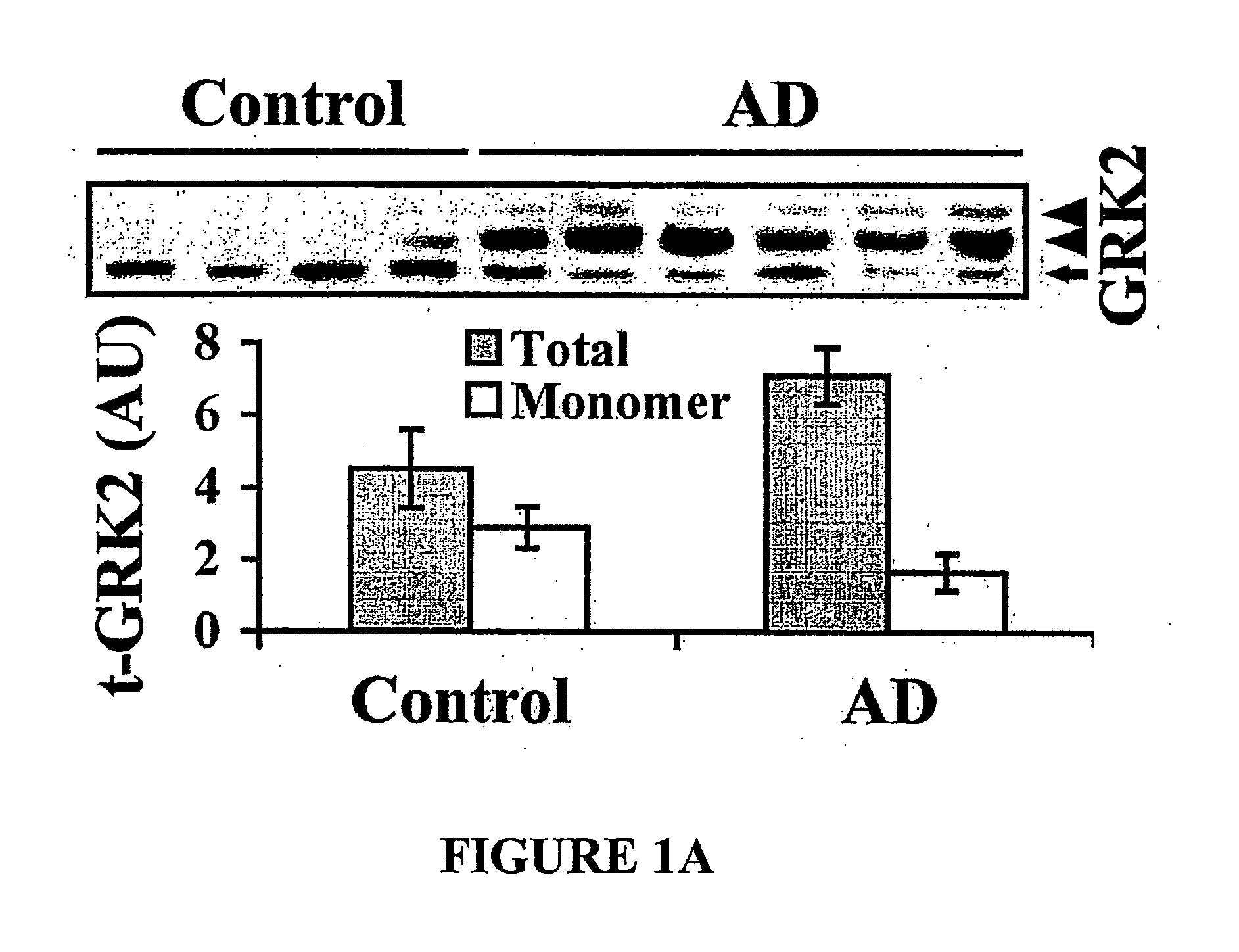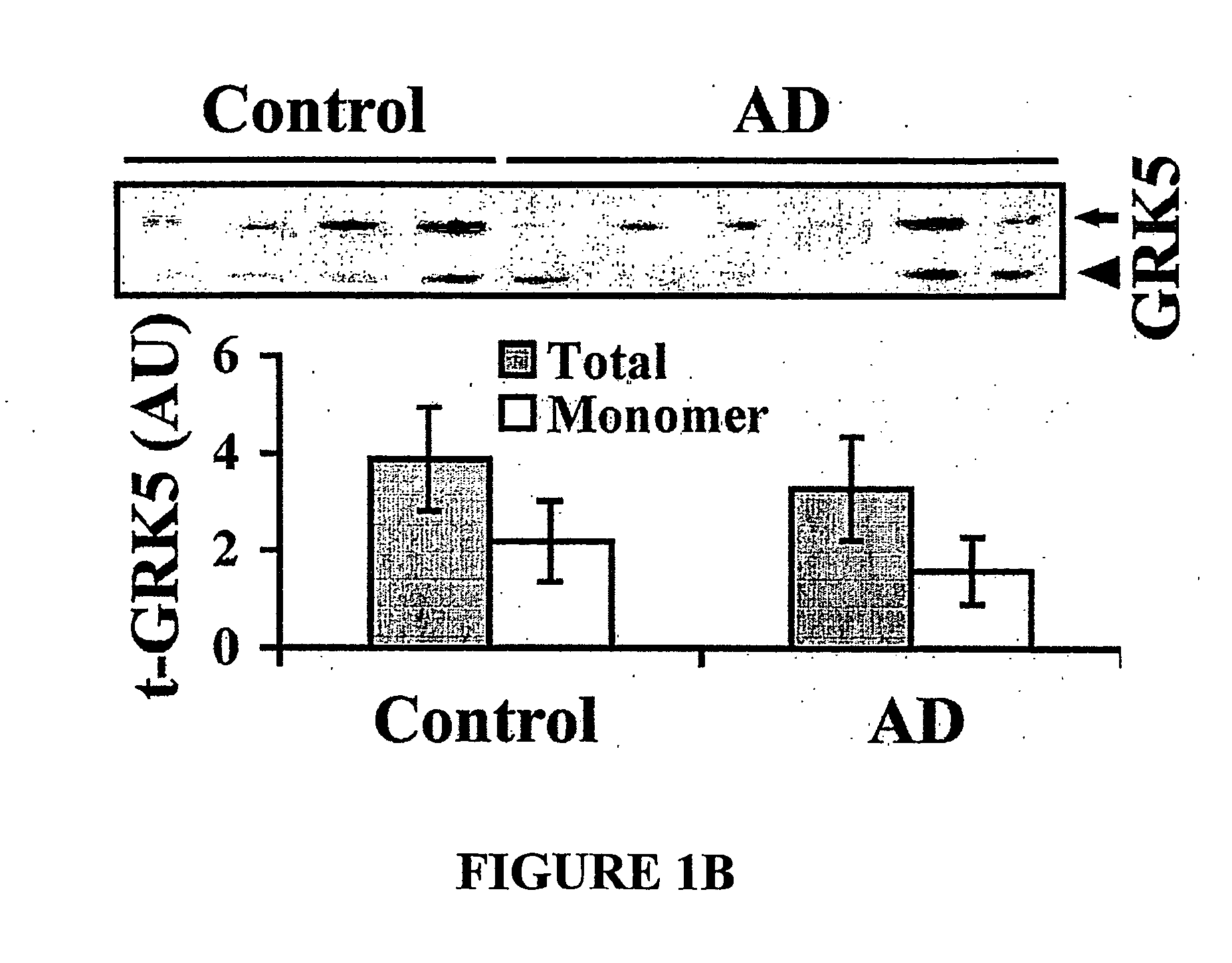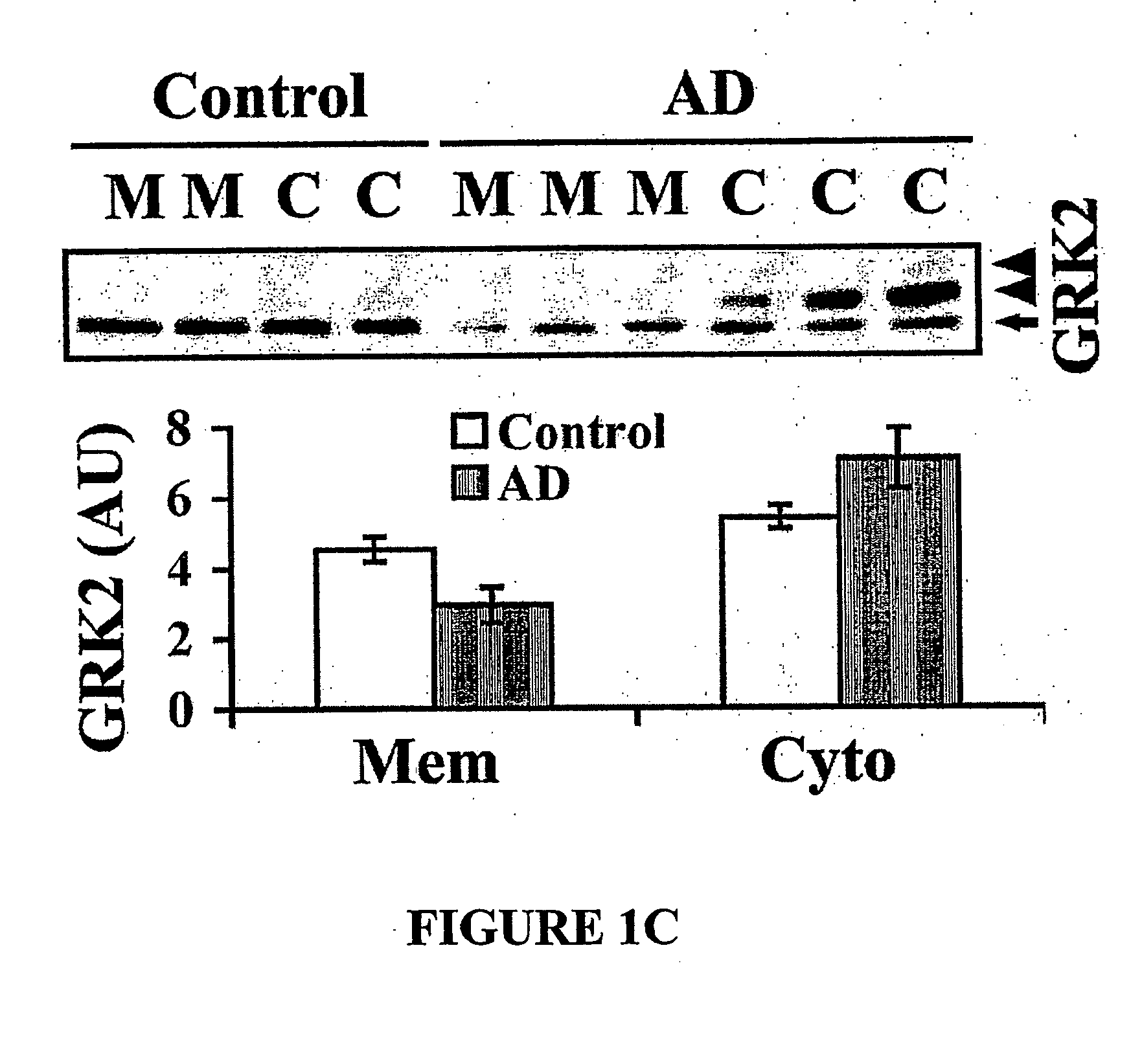Method of detecting and preventing alzheimer's disease, particularly at prodromal and early stages
a technology of alzheimer's disease and prodromal stage, applied in the field of detection and treatment of alzheimer's disease, can solve the problems of memory loss, behavior and personality changes, decline in thinking abilities, and the presence of these structures has been subject to confirmation, so as to prevent or suppress the progression of alzheimer's disease
- Summary
- Abstract
- Description
- Claims
- Application Information
AI Technical Summary
Benefits of technology
Problems solved by technology
Method used
Image
Examples
example 1
Expression and Subcellular Distribution of GRK2 and GRK5 in Postmortem AD Brains (FIGS. 1A-D)
[0049] FIGS. 1A-B show total levels of GRK2 and GRK5, respectively, in superior temporal cortices of AD (n=6) and age-matched controls (n=4) analyzed by WB. Arrowheads indicate ˜90 and 160 kDa high molecular weight bands consistently seen in GRK2 blots. The total levels of GRK2 (including both monomeric and high molecular weight) were significantly elevated (p1C-D show contents of GRK2 (FIG. 1D) and GRK5 (FIG. 1D) in membrane and cytosolic fractions of the same AD and control samples. Lane M=membrane, C=cytosol. For semi-quantitative analysis, GRK levels in different subcellular fractions were standardized against the means of those for controls (expressed in arbitrary units, AU). As compared to controls, levels of both GRK2 and GRK5 in AD brains were decreased in the membrane fraction (p<0.001 for GRK2 and p<0.05 for GRK5) while they were increased in the cytosol fraction (p<0.01 for GRK2 ...
example 2
Expression and Subcellular Distribution of GRK2 and GRK5 in Tg-CRND8 Mouse Brains (FIGS. 2A-F)
[0050] Cortical tissues of Tg-CRND8 mice and their NTg littermates (n≧4 for each group) were used for WB analysis. FIG. 2A shows that total brain GRK2 levels increased in an age-dependent manner (within the age groups examined) for both the Tg and NTg mice, while they were significantly higher in the Tg than in the NTg (p<0.01 by Two way ANOVA). The total GRK2 levels in the Tg mice increased significantly at 10 weeks of age (p<0.05) and remained significantly elevated until at least 19 weeks of age (p<0.01). Total brain GRK5 levels (FIG. 2B) for the NTg mice did not change significantly. Compared to the NTg, although a trend of decrease with advancing age was noticed, such change was not statistically significant. FIGS. 2C, 2D (representative blots) and FIGS. 2E, 2F (corresponding semi-quantitative analysis) show analysis of subcellular distribution of GRK2 and GRK5 in Tg-CRBD8 and NTg mic...
example 3
sAβ Induced GRK5 Translocation from Membrane to Cytosol in Microglial (FIGS. 3A-G)
[0051] N9 microglial cells were treated with sAβ1-42 (500 nM) for 5 minutes. FIGS. 3A, 3C and 3E show resting (control) microglial cells and corresponding semi-quantitative analysis; FIGS. 3B, 3D, and 3F represent those for sAβ-treated microglial cells and analysis. The detailed methods for semi-quantification of GRK subcellular distribution are described in Methods section (above). ICC with phalloidin-FITC and antibody to GRK5 indicated that sAβ induced a rapid translocation of GRK5 from membrane to cytosol compartment, and the cytosolic GRK5 partially co-localized with F-actin as stained by phalloidin.
PUM
| Property | Measurement | Unit |
|---|---|---|
| total volume | aaaaa | aaaaa |
| total volume | aaaaa | aaaaa |
| molecular weight | aaaaa | aaaaa |
Abstract
Description
Claims
Application Information
 Login to View More
Login to View More - R&D
- Intellectual Property
- Life Sciences
- Materials
- Tech Scout
- Unparalleled Data Quality
- Higher Quality Content
- 60% Fewer Hallucinations
Browse by: Latest US Patents, China's latest patents, Technical Efficacy Thesaurus, Application Domain, Technology Topic, Popular Technical Reports.
© 2025 PatSnap. All rights reserved.Legal|Privacy policy|Modern Slavery Act Transparency Statement|Sitemap|About US| Contact US: help@patsnap.com



